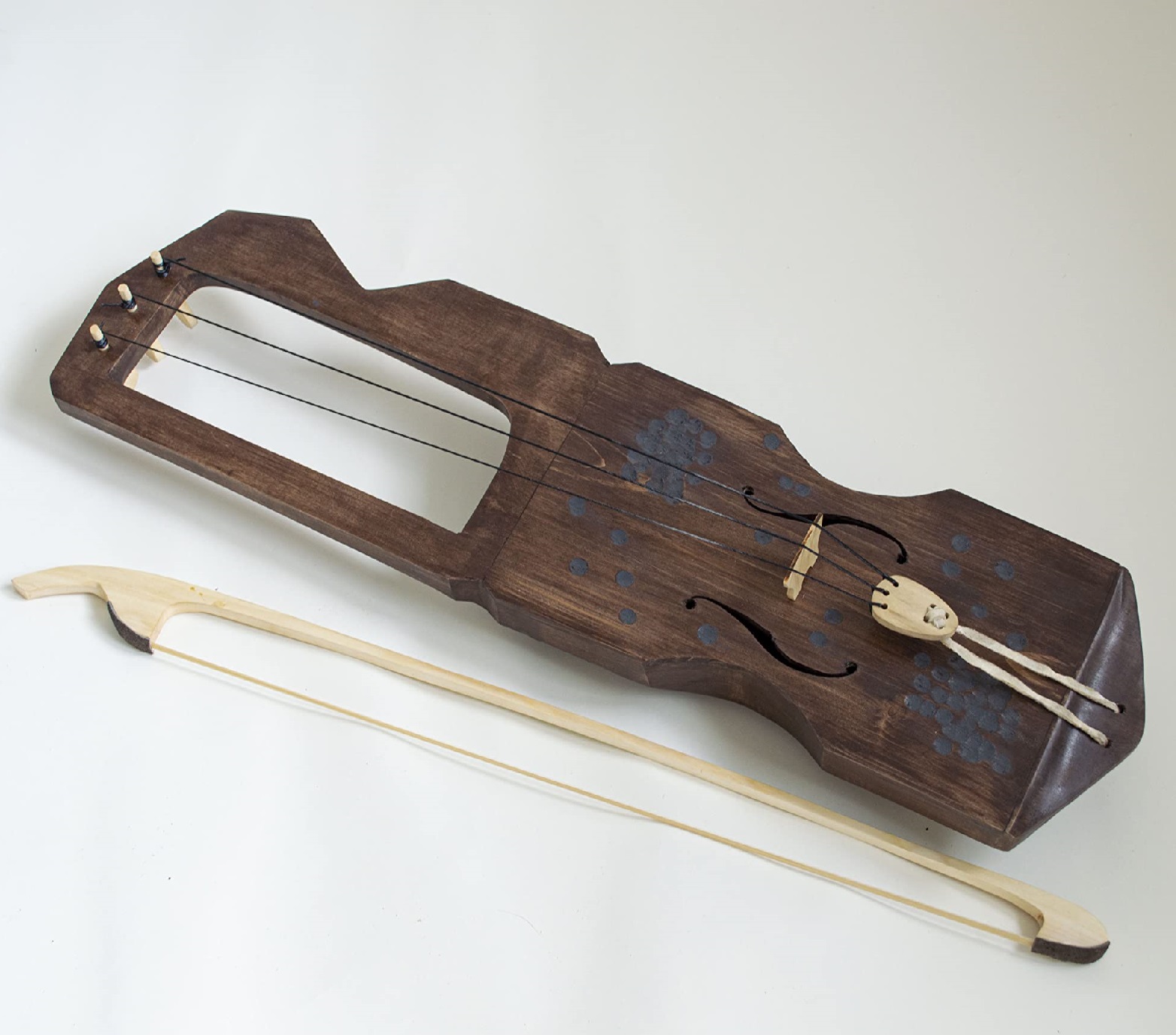Talharpa
Bowed Instruments
Europe
Between 1001 and 1900 AD
Video
The Talharpa, also known as the Tagelharpa, is a traditional bowed string instrument that hails from Northern Europe, particularly associated with Scandinavian cultures. This unique instrument is characterized by its flat body and typically features four strings, which are played using a bow.
It produces a distinctive sound that is often described as dry and resonant, evoking images of the rugged landscapes of the Nordic regions. Traditionally made from wood, the Talharpa’s body is often crafted from birch, spruce, or pine, while the strings were originally made from horsehair. Today, many players opt for metal strings to enhance durability and tonal quality. The instrument is played in a seated position, resting on the knees or at an angle between the legs, allowing for comfortable access to both the strings and the bow.
History of the Talharpa
The origins of the Talharpa can be traced back to at least the 14th century in Scandinavia, with historical evidence suggesting its widespread use among Viking communities. The name “Talharpa” likely derives from the Swedish word “tagel,” meaning horsehair, which refers to the material traditionally used for its strings. Over time, this instrument became an integral part of folk music traditions in various Scandinavian countries. In its early days, the Talharpa was commonly played in rural settings and served as a means of entertainment during gatherings and celebrations. Its popularity began to wane with the advent of modern musical instruments; however, there has been a resurgence of interest in traditional instruments like the Talharpa in recent years. Today, it is particularly popular among folk musicians and enthusiasts who seek to preserve and promote ancient musical traditions.
Materials Used in Construction
The construction of the Talharpa primarily involves natural materials that are readily available in its native environment. The body of the instrument is typically made from solid wood such as birch or spruce, chosen for their acoustic properties and availability. The strings were originally crafted from horsehair but have increasingly been replaced by synthetic or metal alternatives due to their durability and ease of maintenance. Additionally, the bow used to play the Talharpa is often made from wood and strung with horsehair or synthetic fibers. This combination of materials contributes to the unique sound quality that characterizes the instrument.
How It Works
The Talharpa produces sound through a combination of bowing techniques and resonance from its body. When a player draws the bow across the strings, vibrations are created that resonate within the wooden body of the instrument. This process amplifies the sound, allowing it to fill a space effectively. Players can manipulate pitch by pressing down on the strings with their fingers while adjusting bowing pressure and speed. This requires skillful coordination between both hands and allows for expressive playing that can convey a wide range of emotions.
Types of Talharpa
While there is primarily one standard type of Talharpa associated with Scandinavian culture, variations may exist based on regional preferences or individual craftsmanship. Some players may customize their instruments with different string materials or modifications to enhance specific tonal qualities. In addition to these variations, there are related instruments within Northern European musical traditions, such as the Finnish Jouhikko and Welsh Crwth. Each instrument has its own unique characteristics but shares similarities in construction and playing technique.
Features of the Talharpa
Key features of the Talharpa include:
Four Strings: Provides versatility in melody creation.
Wooden Body: Enhances resonance and projection.
Bowed Technique: Requires skillful manipulation for sound production.
Flat Bridge: Designed for simultaneous bowing across all strings.
Cultural Heritage: Represents traditional Nordic music practices.
These features collectively contribute to the distinctiveness of the Talharpa within folk music traditions.
Music Composed for the Talharpa
The music composed for the Talharpa often reflects traditional themes relevant to Scandinavian culture. It serves as an accompaniment to folk songs and dances during social gatherings and celebrations. The melodies played on this instrument typically incorporate improvisation and ornamentation, showcasing both tradition and individual creativity.In ensemble settings, the Talharpa may interact with other instruments such as drums or flutes, creating rich textures that enhance communal experiences during performances. Its ability to convey emotion makes it particularly suited for expressing themes related to nature, love, and community life.
Cultural Significance
The cultural significance of the Talharpa extends beyond its musical role; it embodies aspects of identity and heritage among Scandinavian peoples. As an instrument traditionally associated with rural life, it represents a connection to land and community values. Efforts to preserve traditional music practices have sparked renewed interest in learning how to play instruments like the Talharpa among younger generations. This revival not only helps maintain cultural traditions but also fosters community cohesion through shared musical experiences.
The Talharpa is more than just an instrument; it is a vital part of Northern Europe’s cultural landscape that continues to resonate with audiences today.
FAQ
What is the origin of the Talharpa musical instrument?
The Talharpa, a traditional bowed lyre, originated in Northern Europe, particularly in Scandinavia and the Baltic regions. Its use dates back to the early Middle Ages. It was prominently played in folk music, often accompanying storytelling or dance. The Talharpa’s unique sound is linked to Nordic cultural traditions.
What materials are used to make the Talharpa?
The Talharpa is primarily made of wood, often birch or spruce, which forms its resonant body. The strings are traditionally made from horsehair, though modern versions may use synthetic materials. The bow also uses horsehair to create friction on the strings. The instrument is often handcrafted, maintaining its rustic charm.
What type of music is played on the Talharpa?
The Talharpa is used to perform traditional Nordic folk music. Its haunting and droning tones suit storytelling, historical ballads, and dance tunes. The instrument is often used to create an atmospheric, evocative soundscape. Modern musicians have revived it for experimental and folk fusion genres.
 Links
Links
References
Other Instrument
Categories


















